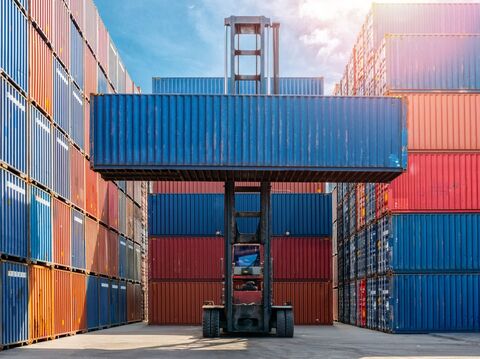What Are the 7Rs of Logistics, and Why Are They Crucial for Success?

A framework approach for supply chain management, the 7Rs of logistics includes everything a business needs for effective inventory management. It lists out for you the right product, customer, time, place, condition, quantity, and cost. These principles help companies shift to better supply chain practices, thus reducing logistics costs by 15%. This also improves their performance, cuts wastage, and increases customer satisfaction. Let’s understand each of the seven components of logistics one by one. In this blog, we will explain their importance and provide some real-life examples. We’ve also listed some challenges you might encounter in implementing them, so you can prepare better.
What are the 7Rs of Logistics and Why do they Matter?
-
Right Product
Effective logistics management begins with packaging and shipping the right product. This helps you avoid mixes, ensure product quality, and match customer needs. Delivering the right product is the key to customer satisfaction.
-
Right Quantity
The second step in the 7 Rs of logistics involves accurate inventory management. This includes demand trend forecasting to avoid over- or understocking. This prevents the wastage of funds and space.
-
Right Condition
Right condition of a product calls for proper packaging and careful handling until delivery. For sensitive items like electronics or perishables, companies add features like temperature monitoring, protective materials, and live tracking.
-
Right Place
Location accuracy is critical during delivery. Organizations employ smart routing and GPS tracking to ensure smooth deliveries, cut back on delays, and maximize resource utilization.
-
Right Time
Timing is one of the 7 Rs of logistics. It is one of the most vital elements, and it directly affects customer satisfaction. According to new statistics, 56%[1] of customers walk away from brands after just one failed delivery. Just-in-time delivery and tracking systems reduce storage costs and meet strict delivery timelines.
-
Right Customer
Often, large orders end up with the wrong customers. Advanced logistics operations use verification and automated labelling to ensure that the right people receive orders, resulting in fewer returns.
-
Right Cost
Cost optimisation is a major part of the 7 Rs of logistics management. Data analysis helps companies cut costs in shipping, storage, and inventory without compromising on quality.
How the 7Rs Impact Supply Chain Efficiency
The 7Rs of logistics play a major role in improving operations. Businesses experience immediate benefits after implementing the 7Rs of logistic management:
- Minimised storage costs through optimised levels of inventory.
- Minimised returns by ensuring that your orders are fulfilled correctly.
- Lesser waste due to proper handling and timing.
- More satisfied customers, which account for repeat business.
- Safer and more efficient processes, which save time and money.
These 7Rs of logistics show just how well these benefits connect with each other. For example, delivering the correct product in the correct condition does not only delight customers. It also saves return processing costs and prevents inventory waste. Let’s check some real-world examples to understand the impact of these 7 principles better.
3 Real-World Applications: Companies Successfully Implementing the 7Rs
Many companies experiment with the 7Rs of logistics to drive efficiency, cost savings, and customer satisfaction. Here’s how 3 of them transformed their operations with this framework.
-
Walmart
Walmart's cross-docking system delivers products directly from incoming to outgoing trucks. This saves them a considerable amount of inventory costs through logistics management. The automated distribution also helped reduce their delivery speed.
-
Toyota
Toyota excels in the just-in-time delivery system. Their logistics framework has integrated AI into their real-time inventory adjustments. This eventually prevented bottlenecks in the supply chain.
-
Amazon
Currently, Amazon leads the 7Rs of logistics management evolution. An AI-driven inventory system allows 65%[2] faster delivery. It conducts predictive analytics and strategic warehouse placement to eliminate stoppages. This is also a cost-effective process.
Challenges in Applying the 7Rs of Logistics
Various global factors like inflation, conflicts, pandemics, etc., have been disrupting supply chain management. The 7Rs framework can be especially useful here. Incorporating modern equipment allows better tracking and optimisation of operations. However, that requires deep pockets and intensive training for every aspect of these principles. The cost might come as a challenge, but it will be a long-term investment.
Consider the following to overcome some of the challenges in the 7Rs of logistics:
- Data analytics to enhance demand forecast.
- Investment in employee training to ensure standardised execution.
- Development of flexible relationships with suppliers.
- Real-time tracking systems.
- Properly formulated contingency plans.
How GrowthJockey Can Assist in Optimising Your Logistics Strategy
The 7Rs of logistics provide a solid base for an orientated, customer-focused supply chain. At GrowthJockey, we transform these principles into practical solutions customised specifically for your business. Begin by highlighting the most acute area in the 7Rs that is going to change your operations. Think about how you could improve your 'Right Time' to improve delivery windows. You can also reduce the cost of logistics by optimising the 'Right Cost.'. Start now!
FAQs on 7Rs in Logistics
1. What are the 7 Rs of logistics?
The 7 R's of logistics management include the right product, quantity, condition, place, time, customer, and cost. They give the proper foundation for effective supply chain operations.
2. Why is 7R important in logistics?
The 7Rs of logistics help improve internal operations of a firm. By aligning with these principles, you can minimise errors and smoothen delivery. From inventory management to transportation planning—everything can be improved with 7Rs.
3. Why is logistics important for business success?
Logistics 7Rs show how operations help achieve competitive advantage. They lower the cost, enhance customer satisfaction, and contribute to better resource usage. They directly impact profitability and growth.








